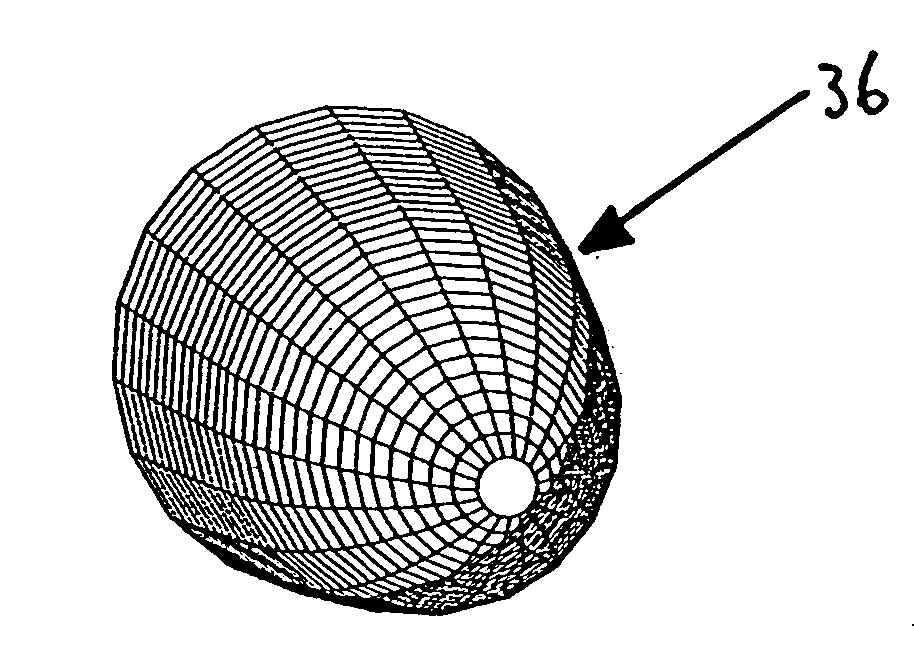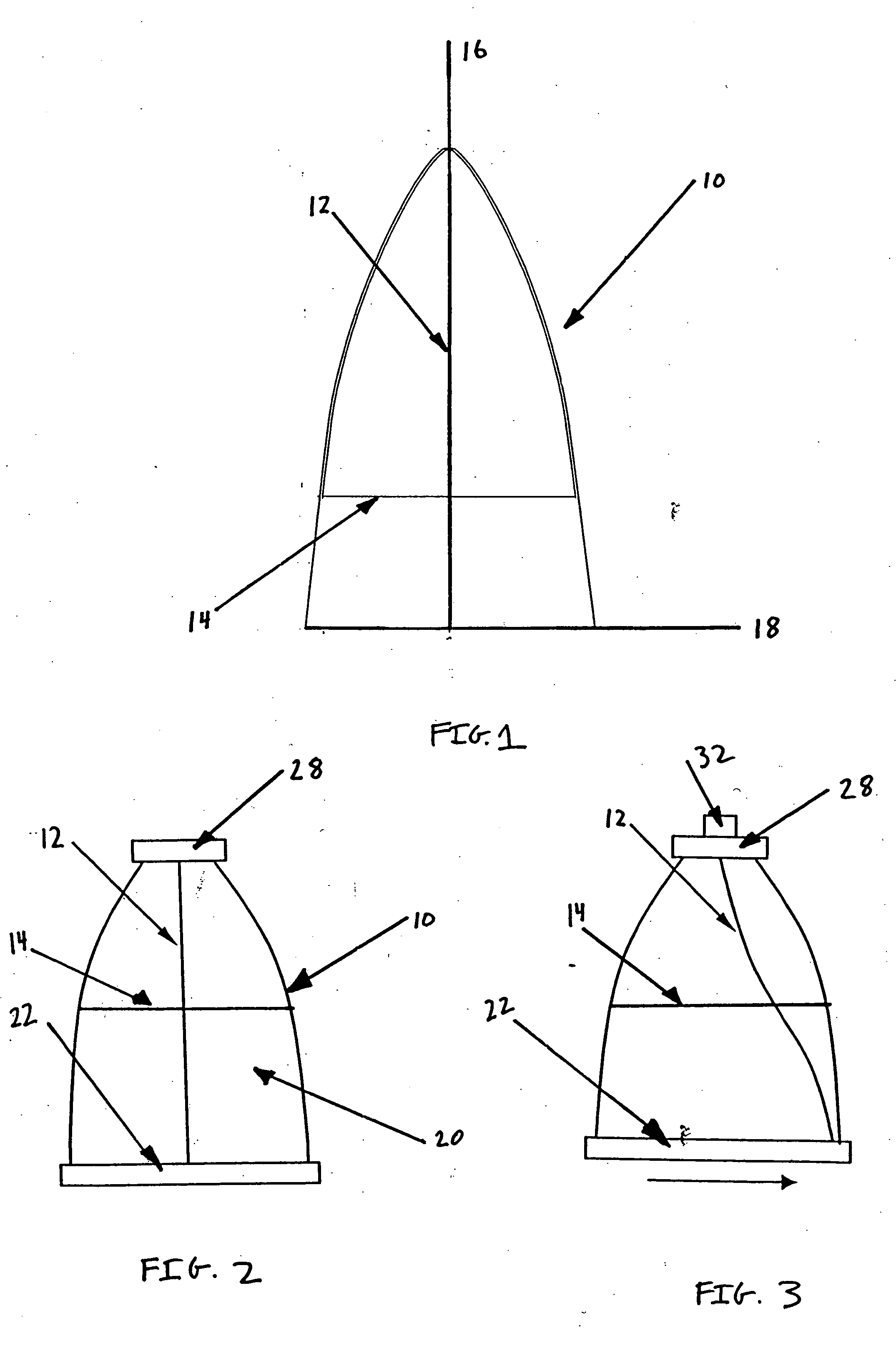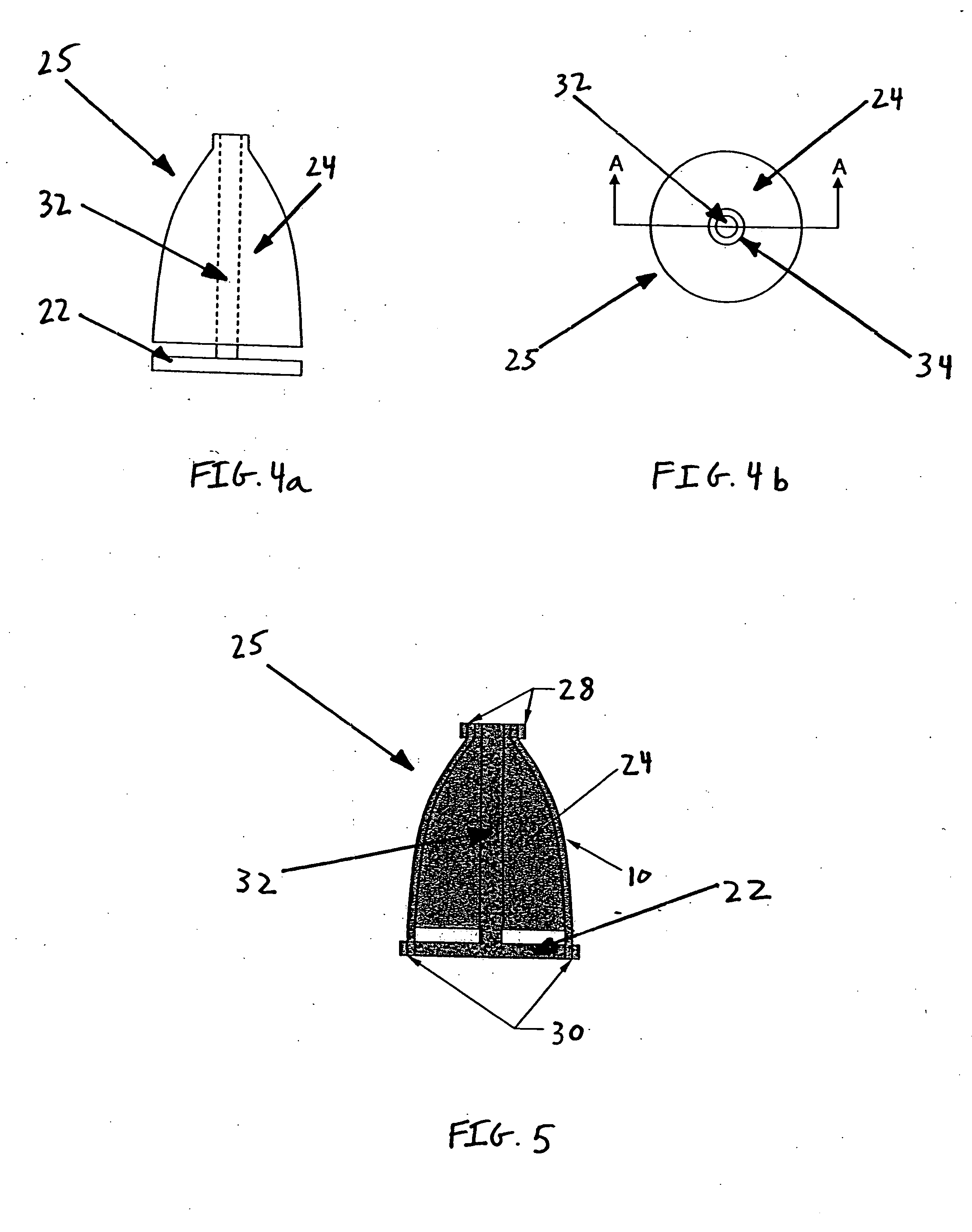Fabricating symmetric and asymmetric shapes with off-axis reinforcement from symmetric preforms
- Summary
- Abstract
- Description
- Claims
- Application Information
AI Technical Summary
Benefits of technology
Problems solved by technology
Method used
Image
Examples
Embodiment Construction
[0031]According to one aspect of the present invention, as depicted in FIG. 1, a symmetrically-shaped sock-like preform 10, which may be open or closed ended, includes warp fibers 12 substantially parallel to the 0° direction 16 and fill or hoop fibers 14 substantially parallel to the 90° or hoop direction 18. As used, the hoop or fill fibers and the 90° direction refer to the fibers and direction that run circumferentially around the preform, while the warp fibers and 0° direction run perpendicularly to the hoop fibers of the preform. The symmetrically-shaped preform 10 may be woven using conventional three-dimensional Jacquard weaving. The warp and fill fibers may be of any of the fiber types used to weave preforms. Further, the fibers may be pre-impregnated with a polymeric resin.
[0032]Referring to FIG. 2, a symmetrically-shaped preform 10 is placed upon a fixed mandrel 20 with the warp fibers 12 oriented substantially perpendicular to a rotating mandrel 22 and the fill or hoop f...
PUM
| Property | Measurement | Unit |
|---|---|---|
| Angle | aaaaa | aaaaa |
| Angle | aaaaa | aaaaa |
| Angle | aaaaa | aaaaa |
Abstract
Description
Claims
Application Information
 Login to View More
Login to View More - R&D
- Intellectual Property
- Life Sciences
- Materials
- Tech Scout
- Unparalleled Data Quality
- Higher Quality Content
- 60% Fewer Hallucinations
Browse by: Latest US Patents, China's latest patents, Technical Efficacy Thesaurus, Application Domain, Technology Topic, Popular Technical Reports.
© 2025 PatSnap. All rights reserved.Legal|Privacy policy|Modern Slavery Act Transparency Statement|Sitemap|About US| Contact US: help@patsnap.com



